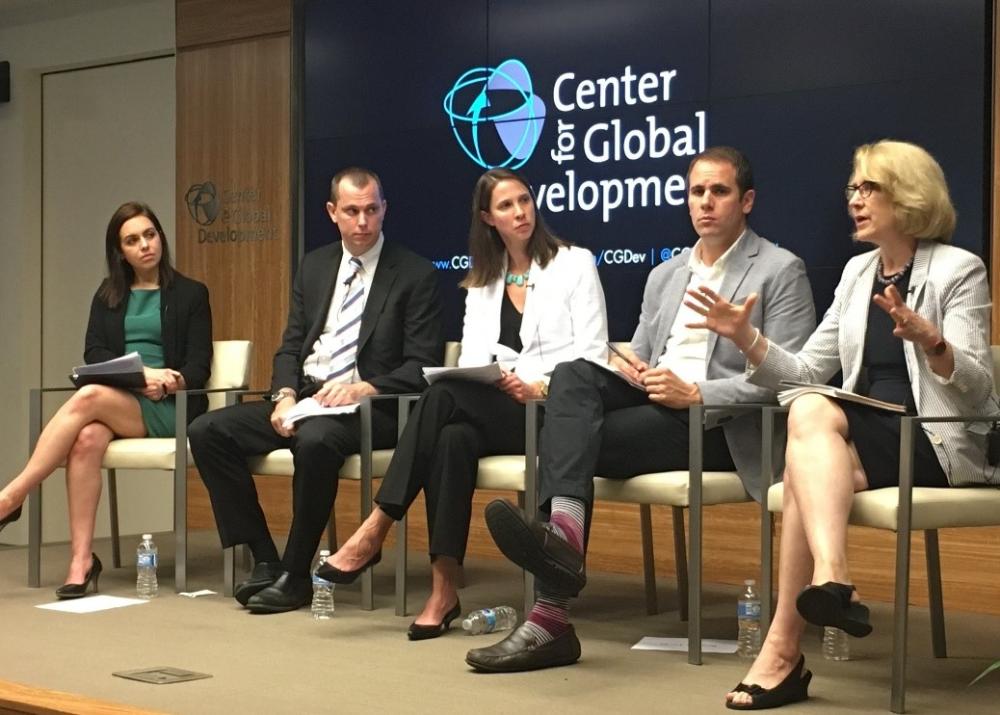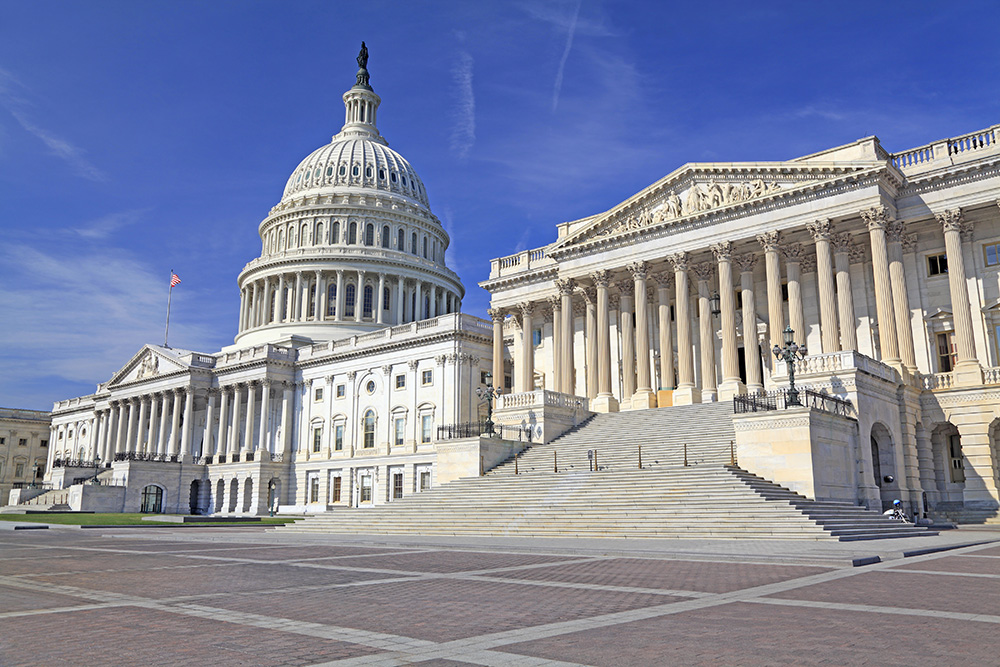Last week, CGD hosted the US Agency for International Development (USAID) for the first public presentation of the agency’s new “Journey to Self-Reliance” metrics. Launched by USAID Administrator Mark Green, the Journey to Self-Reliance is a new strategic approach that aims to more systematically orient the agency’s programming toward building countries’ capacity to address their own development challenges. A key component of this effort is a set of metrics that seeks to assess individual countries’ progress along this journey. After USAID’s Susan Fine and Chris Maloney provided an overview of the indicators and their relationship to the Journey to Self-Reliance, my colleagues Sarah Rose and Erin Collinson, along with AidData’s Brad Parks, kicked off a panel discussion that examined the indicators, posed key questions about how USAID will use them, and explored the merits and limitations of using country-level quantitative metrics.

What are the metrics?
The agency selected 17 publicly available, third-party indicators that it designates as measuring either commitment (open and accountable governance, inclusive development, and economic policy) or capacity (capacity of government, civil society, citizens, and the economy). This fall, USAID plans to release newly designed “roadmaps”—which provide a snapshot of performance on the full set of indicators—for each of the agency’s partner countries.
How will USAID use (and not use) the metrics?
In his presentation, Maloney emphasized that the roadmaps are not scorecards. Rather than being used to compare country performance or establish a graduation policy, they will help USAID understand a country’s profile on the development spectrum, offer a jumping-off point for country dialogues and strategic planning efforts, and, ultimately, help identify which countries could—at some point—be eligible to move away from the traditional partnership model. What’s more, the agency plans to pair the roadmaps with a set of secondary metrics and other supplemental information.
Are they the right indicators?
Rose argued that all cross-country indicators have limitations. No set of metrics will capture everything that’s important about a country’s development progress. Not only that, but because of lags in data reporting, the indicators present a mere snapshot of where a country was a year or two ago and offer little insight into a country’s past trends or future trajectory. But because USAID’s low-stakes, nonprescriptive approach to using its chosen metrics is sensitive to these and other limitations, Rose called the selected set of metrics broadly defensible.
Parks asked a more fundamental question about how indicators are empirically associated with USAID’s idea of self-reliance. Conceptually, the idea is that stronger country commitment and capacity translate into greater ability to plan, finance, and implement a development agenda. But do improvements in the selected indicators correlate with reduced need for foreign aid? Parks recommended that USAID study how improvement in country performance on the indicators relates to that country’s relationship with USAID and whether it evolves in a way that would be expected of a country progressing toward self-reliance.
How will partner countries respond to the “roadmaps”?
Framing the roadmaps as an entry point seems wise given the indicators’ limitations, but the ambiguity over their weight in decision-making could affect how partner country governments respond. If MCC’s experience is any indication, partner country governments may be looking for actionable policy guidance to improve their indicator scores. USAID will need to be prepared to respond consistently to the inquiries and concerns of its partners. On the other hand, because the metrics’ role in USAID’s decision-making process is unclear, countries may respond accordingly. As Parks noted, while MCC’s scorecards are by no means perfect, they have the effect of focusing partner country governments on a specific outcome. Without predictability about of how the metrics will be used, USAID runs the risk of dampening interest in the Journey to Self-Reliance metrics, or worse, facing a crisis of relevance.
How might the metrics strengthen or inhibit country ownership?
In many ways, the Journey to Self-Reliance framework fits within USAID’s broader goal of increased country ownership because it is a “country-centric” approach, as Susan Fine noted. But the metrics are a tool coming from Washington, and as past CGD research has highlighted, Washington priorities have often taken priority over the use of evidence and partner country consultations.
One of the current challenges to country ownership is limited flexibility in how USAID’s budget is allocated—owing to both congressional spending directives and administration priorities. If—in bringing new data to decision-making—the self-reliance agenda helps USAID secure commitments from Congress to loosen the spending reins or succeeds in shielding some of the agency’s programming from the influence of other executive branch actors, it could open the door to greater country ownership. But while USAID has already been socializing the new metrics and approach on the Hill as well as with the State Department, the agency has plenty of work to do to educate all its stakeholders about its new approach and how it might be used to help inform meaningful dialogues with partner countries and decisions about its development investments.
What are the staffing requirements for effective implementation?
Rose stressed that USAID will need to allocate sufficient resources to the time-intensive task of operationalizing the use of a complex set of indicators. And, likewise, maintaining secondary data and qualitative information that will factor into the strategic dialogue and policy planning for as many as 140 partner countries is sure to be resource intensive. Fine suggested that a specialized self-reliance unit focused on metrics would be housed in USAID’s Bureau for Policy, Planning and Learning, but also acknowledged that the agency will need an array of experts both in DC and in the field, and across its regional and sectoral bureaus.
In short, last week’s CGD event launching USAID’s new set of metrics was just the start. We at CGD are excited to see how USAID’s Journey to Self-Reliance strategy evolves and will be keeping a close eye on how the agency addresses the questions above (and more).
Disclaimer
CGD blog posts reflect the views of the authors, drawing on prior research and experience in their areas of expertise. CGD is a nonpartisan, independent organization and does not take institutional positions.




